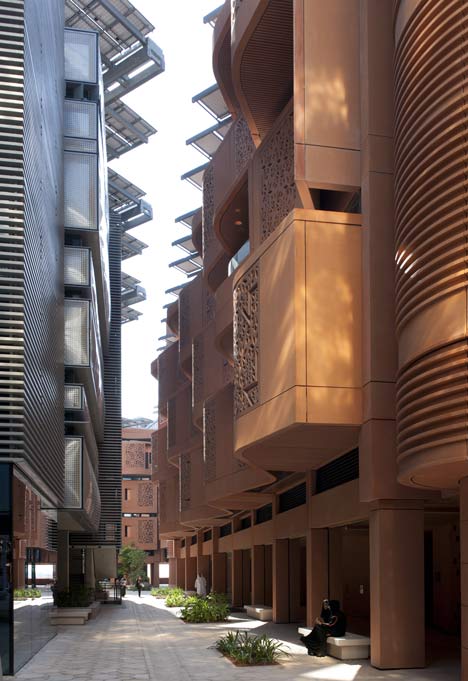
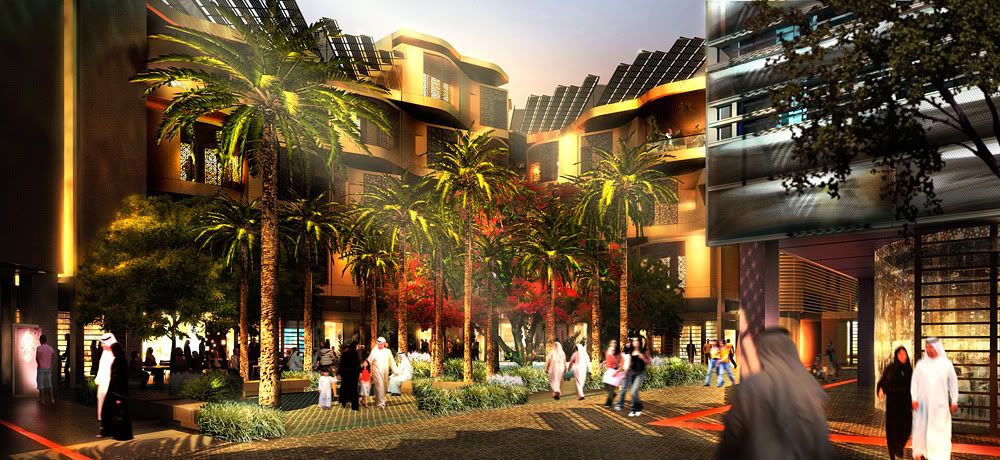
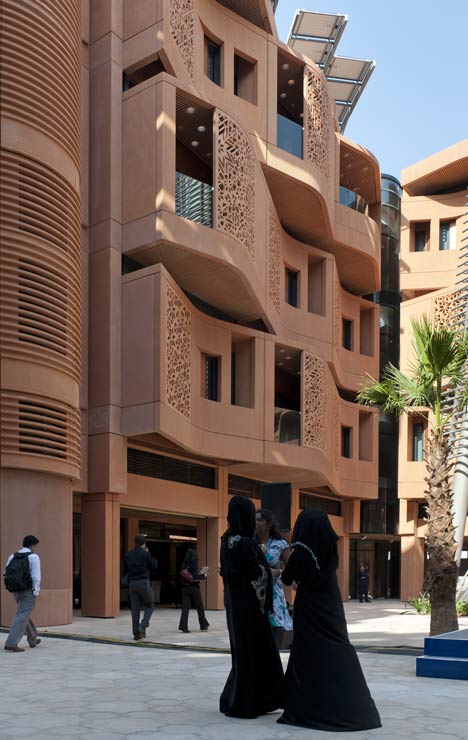
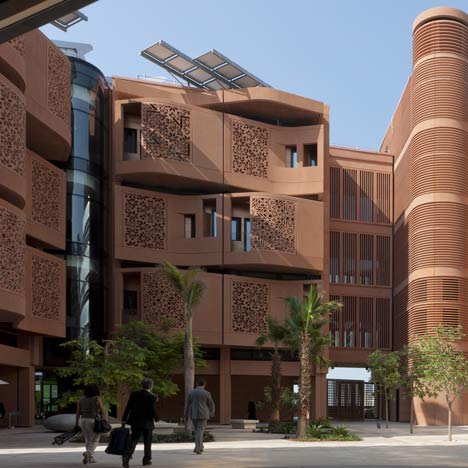
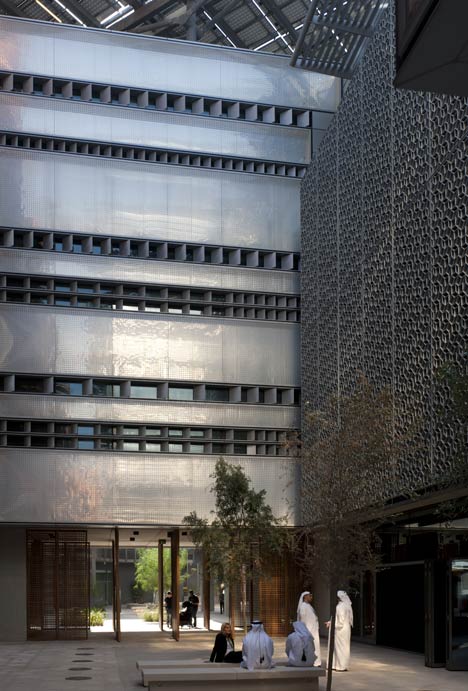
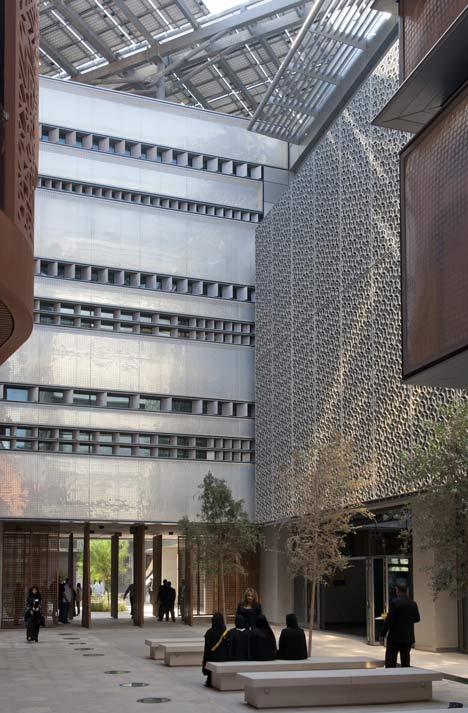
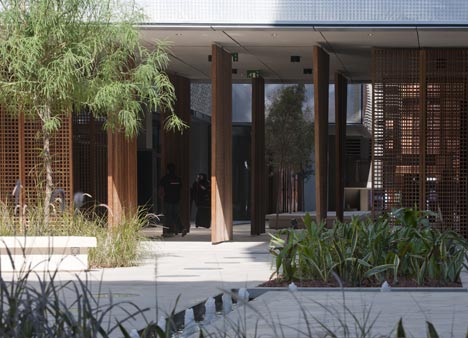
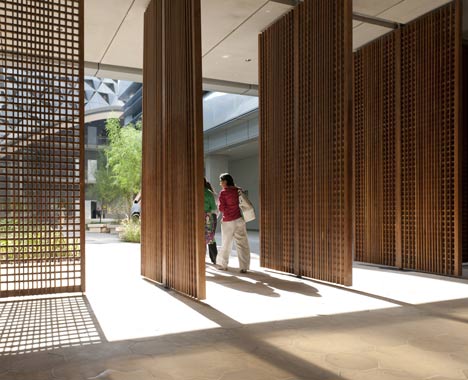
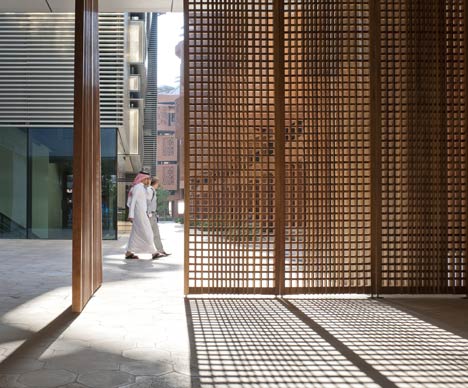
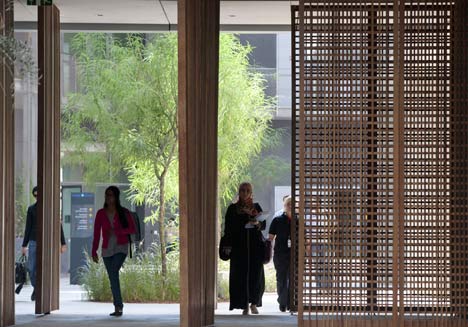
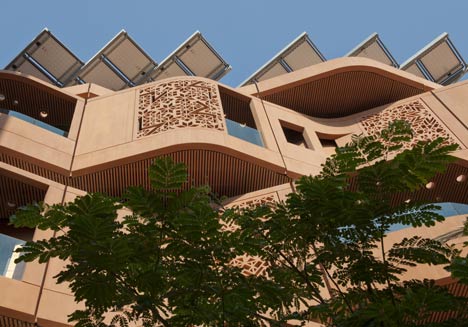
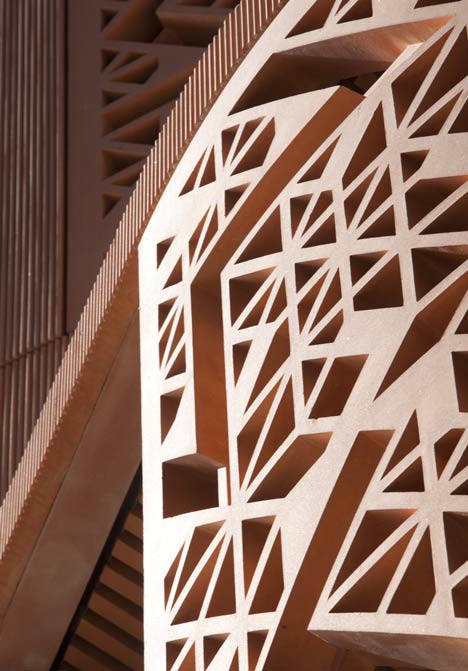
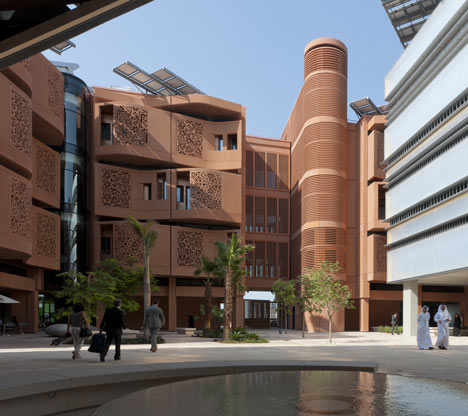
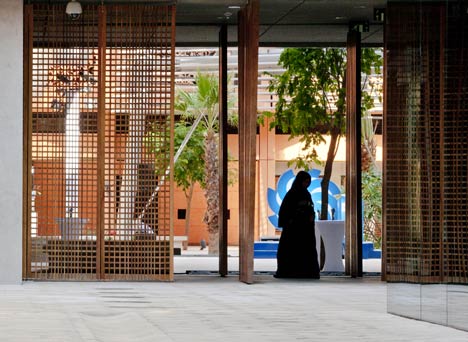
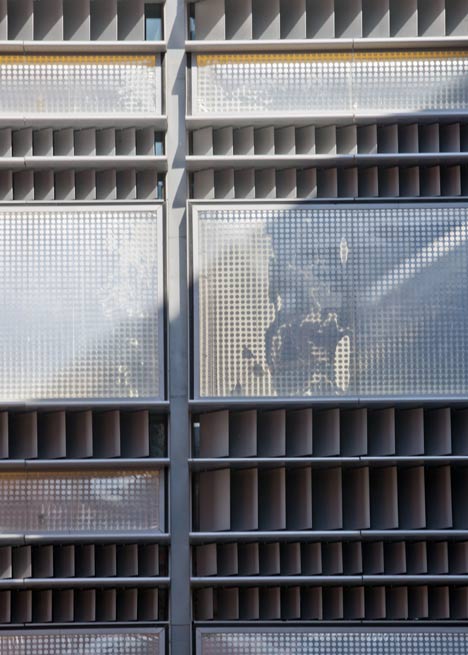
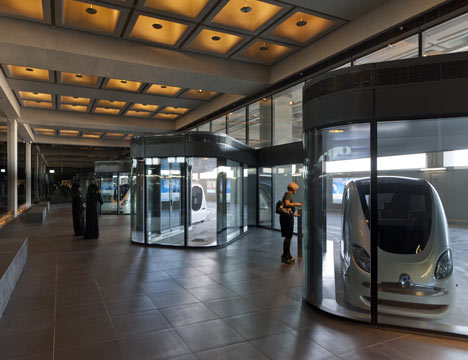
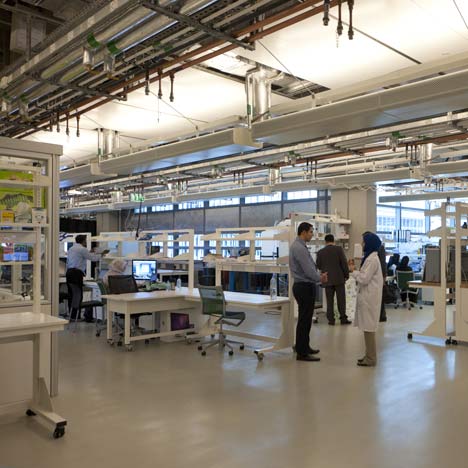
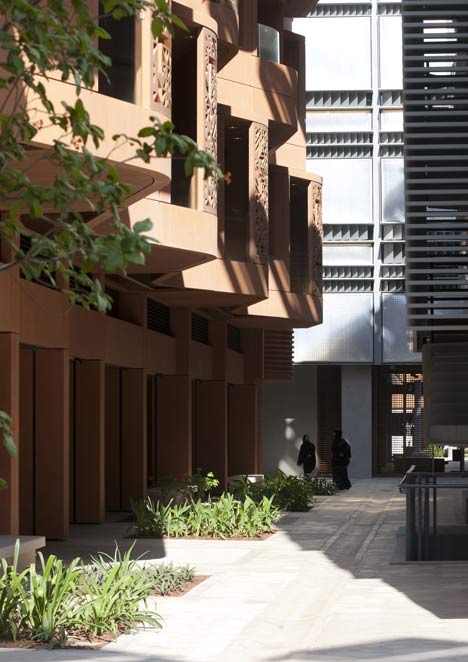

Established in April 2006 Masdar (the Abu Dhabi Future Energy Company) is a multi-faceted company advancing the development commercialisation and deployment of renewable energy solutions and clean technologies Masdar integrates the full renewable and clean technology lifecycle - from research to commercial deployment – with the aim of creating scalable clean...
Norman Foster has said:
"Many have dreamed of a utopian project that would be powered by solar energy. The official opening today of the initial phase of Masdar Institute campus in the city of Masdar is a first embodiment of this search. The student community is already working, living and working in their barracks. This community, independent of any electrical network, develop a surplus of 60 percent of its energy needs, the processes of waste water on site is recycled and pioneered many concepts of saving energy. It a bold experiment that will change and evolve over time -. As hosts twelve independent research projects with potential applications throughout the world "
Foster + Partners have completed the first of a series of buildings completely powered by solar energy in Masdar City, a sustainable urban quarter in Abu Dhabi in the UAE. The Masdar Institute, a research center dedicated to sustainable, is the first of four buildings planned for the site, and generate more solar energy than it consumes. The following information is from the architects: This is the official opening of the school Masdar Institute, the first building with solar energy in Masdar City Under the patronage of His Highness Sheikh Mohammed bin Zayed Al Nahyan, Crown Prince of Abu Dhabi and Deputy Supreme Commander of the Armed Forces of the United Arab Emirates, His Highness Sheikh Mansour bin Zayed Al Nahyan, Deputy Prime Minister and Minister Presidential Masdar Institute officially opened today, in which the architect Norman Foster was present. The Masdar Institute, dedicated to sustainability research, is the first building to be fully operational in the city of Masdar.
The master plan, by Foster + Partners, includes the lessons that have evolved over centuries of traditional Arab architecture. The Masdar Institute is the first building of its kind to be powered exclusively by renewable solar energy. Be used as a test pilot of sustainable technologies to be studied for use in future building Masdar City. Graduate students are the first resident community of Masdar City. A field of 10 megawatts of solar energy in the master site provides 60% more energy than consumed by the Masdar Institute, the remaining power is fed to the network of Abu Dhabi. The campus, which consists of a main building, a knowledge center and rooms for students, uses much less energy and water than the average building in the UAE. In particular, the Institute and its facilities water use 54 percent less potable water, electricity 51 percent less and are completely powered by solar energy. These reductions are based on comparisons with the UAE baseline standard for buildings of similar size and specifications. About 30 percent of the energy of the campus will be covered by solar panels on the roof, with 75 percent of hot water is also heated by the sun. The Institute demonstrates the sustainable principles that underpin the overall master plan. The buildings have facades self-shadowing and are designed to provide maximum shade and shelter to adjacent buildings and pedestrian streets below. More than 5,000 square meters of photovoltaic roof-mounted energy and provide additional shade at street level. Windows in residential buildings are protected by a contemporary reinterpretation of mashrabiya. This a gated window type projection viewpoint, developed sustainably built, glass-reinforced concrete, sand colored local integration in the context of the desert and to minimize maintenance. The perforations for light and shadow are based on patterns found in traditional Islamic architecture. The labs are extremely flexible to change with the services of 'plug and play "to promote interdisciplinary research. Horizontal and vertical fins and brise soleil shadow labs. These are very isolated by the facades of inflatable cushions, which stay cool to the touch under the intense desert sun. cooling air currents are channeled through the public spaces with a contemporary interpretation of traditional wind towers in the region. Public spaces are cooled by green areas and water to provide evaporative cooling. Thermal testing chamber in place by Fosters' research team have confirmed substantial reductions in heating or "sense" the temperatures on campus compared with current practice in the heart of Abu Dhabi. Laboratories and homes with the support of a variety of social spaces, including a gym, dining room, cafeteria, health knowledge, majlis - or meeting place - and gardens that extend to the civil sphere and help create a new destination within the city. One, two and three bedroom apartments are in low-rise high density blocks that act as counterpoint to social educational laboratory environment.
Announced in 2007, the project was initially announced as the first "zero carbon, zero waste" of the city, but plans have fallen since then.
A solar field in the master plan provides power for the building and feed back what is left to the network of Abu Dhabi.
The building has a facade of perforated glass reinforced concrete local sandy color and detail with the patterns that are commonly found in traditional Islamic architecture. The development of traditional urban design borrows the Arabs, with shady courtyards and narrow streets, pedestrian.
This building is the first of four planned phases that will bring the student population of 600 to 800 possible. Four blocks of houses around a central laboratory and the Knowledge Centre, the first of a series of additional campus buildings including a mosque, conference and sports complex. The second phase is expected to start in place before the end of the year to include more laboratories and apartments. The Masdar Institute is visited by 10 personal rapid transit (PRT) cars that are running a pilot project in the city's perimeter to the crypt under the building.
This project signals the commitment of Abu Dhabi to create an international center for pioneering sustainable technologies in an environment that is itself carbon neutral.
This is the web site: http://www.masdar.ac.ae/home/index.aspx
To develop reasons for the screens, parenting partners collaborated with Jean-Marc Castera, a French expert in geometric figures in Islamic art.Jean-Marc Castera explains his thinking and the development process behind the screens of reasons:"The patterns are of a link between the secular Arab geometric art, especially the family octagonal, and the scientific concept of the past quasicrystals. This provides evidence for synergy with Arabic and Western culture, science and the arts, with the present and the past. In this sense, the patterns are very appropriate for the Masdar Institute.Given the enormous scale of this project, we decided to develop a set of patterns that could be seen as the details of a traditional model invisible. To avoid monotony, I wanted to use different scales. This raises the question - how to preserve harmony using different scales? These scales have to be linked, belonging to the same "meta-structure." Here came the quasicrystals: I first drew an octagonal structure then uses a 2D quasicrystal inflation process to get the second, and again, and that's it: I have my three scales of networks.At some point I came to the idea of using a different starting point for the first network. So I have another family of three networks. Naturally, the idea then came to superimpose the two additional families. That idea is the starting point for the Masdar Institute screen models.GRC was selected as the material of construction for the balcony and screens not only for its ability to be molded easily, but also because it is very low in embodied energy and carbon footprint. The material went up in performance analysis LCA / Partners Promotes conducted in conjunction with the consultant team, which included Decarbon8 and Mott Macdonald.Although the original intention was the manufacture of facade elements of GRC at the local level, only one company, Canbuild, based in Hong Kong, could meet the deadline for submission of the screen and balcony components. However, a local manufacturer called Fibrex, which had a spare production capacity after the slowdown in Dubai, provided the columns and paneling of the column. Carbon footprint (including shipping) is calculated by the client for all materials included in the project.



